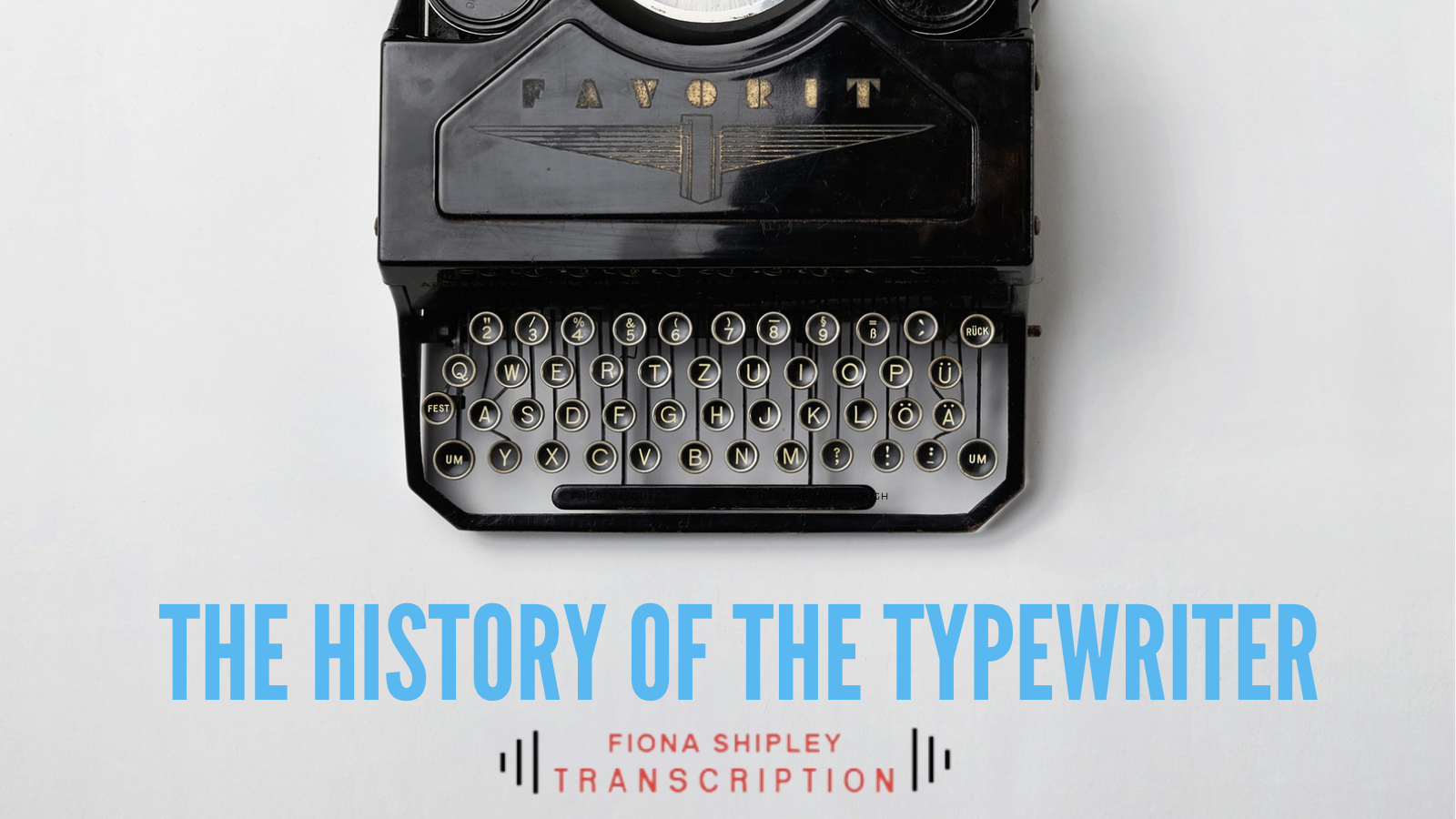2022 is most definitely underway – and with it, Fiona Shipley’s 32nd year! It’s incredible to think that our transcription service has been providing our clients with accurate, quality transcripts for 32 years. When you put it into context, when our own Fiona began her career in transcription almost 40 years ago, transcripts were produced from tapes using manual typewriters typing straight on to paper, possibly with carbon copies. Tippex (for those of you that remember the white solution – for those who don’t, click here!) could be used, but generally it meant that if any mistakes were made, the whole page had to be typed again.
So we thought it might be worth a little nostalgic trip down memory lane to take a look back at the very tool that made producing transcripts possible…
The typewriter!
Throughout the 1800s there was an ever-increasing demand for devices that could print individual documents. On the 23rd June 1868, the first patent was granted for a typewriter that was intended for use by the general public and could be produced on a mass basis, but it wasn’t until 10 years later that a typewriter offered the ability to type words in upper and lower case letters. The first author to submit a manuscript in typed form was renowned author Mark Twain, whose novel Life on the Mississippi was transcribed to a typewriter.
American inventor Christopher Latham Sholes’s first attempt at a typewriting machine was crudely pieced together with part of an old table, a circular piece of glass, a telegraph key, a piece of carbon paper, and piano wire. The prototype ended up looking like a toy piano!
It remained very much a luxury device, costing the equivalent of half the average annual salary. The very first versions of the typewriter had a type-bar system (think toy piano again) largely because the only people able to afford a typewriter would also have a piano at home. They would therefore be familiar with the piano key style and find their use more intuitive. The issue was that the keys jammed easily. To slow down the user’s typing it was suggested to split the keys up for the most commonly used letters. And so today’s standard “QWERTY” keyboard was born.
Worldwide use in the 1900s
Scholes in fact showcased his machine to none other than Thomas Edison – the very person who played a critical role in introducing the modern age of electricity to the world. After promising that machines would one day be able to operate via electricity Mr. Edison went on to build a typewriter that was operated electrically by a series of magnets, although this machine was never manufactured.
An electric typewriter that could be used by the masses began to emerge in the early 1900s. The typewriter became an essential part of the office and was operated by armies of female typists. During the 1950s and 1960s, the entire environment of the office changed along with most office equipment. From about 1950, almost all office typewriter manufacturers presented their machines in coloured steel cases that concealed the mechanism.
In 1941, IBM revolutionised how the words appeared on the printed page by developing the concept of proportional spacing. Office equipment that was used in the late 1800s – including the typewriter – remained in use until the 1970s, when they were replaced by computers.
The future of transcription…?
While much has changed since computers took over, some features such as the QWERTY keyboard have never diverted from their original form. Computers have made transcription much, much easier and more convenient for transcribers.
Regardless of the new developments and evolution of the tools available for transcription, the key to successful transcription rests with the human transcribers themselves. It’s the human transcribers who understand the nuances of what is being said, can decipher accents, question content that isn’t clear and always make sure that everything is transcribed accurately.
For all your transcription needs please do contact us on 01737 852 225 or email alex@fionashipley.com.

